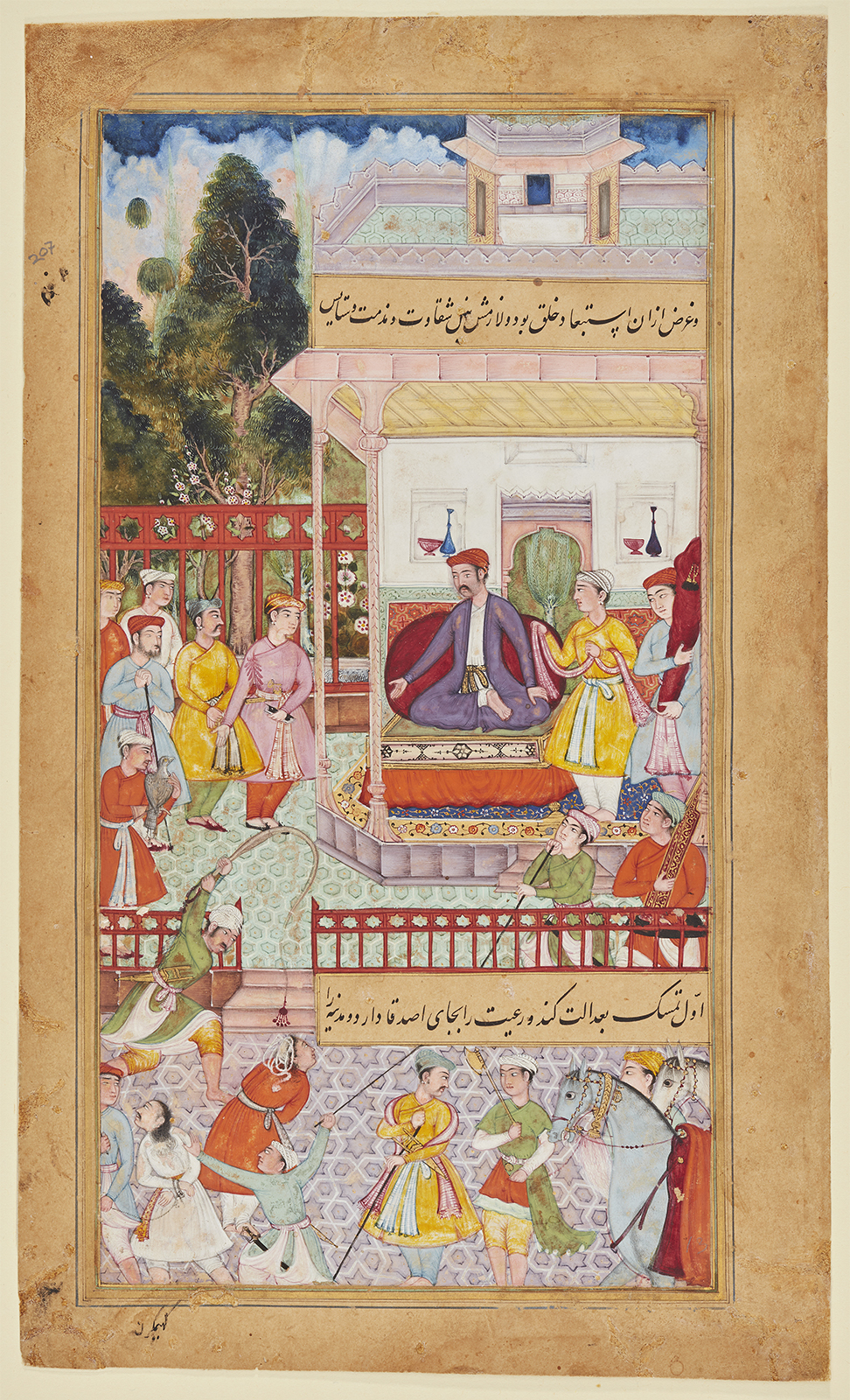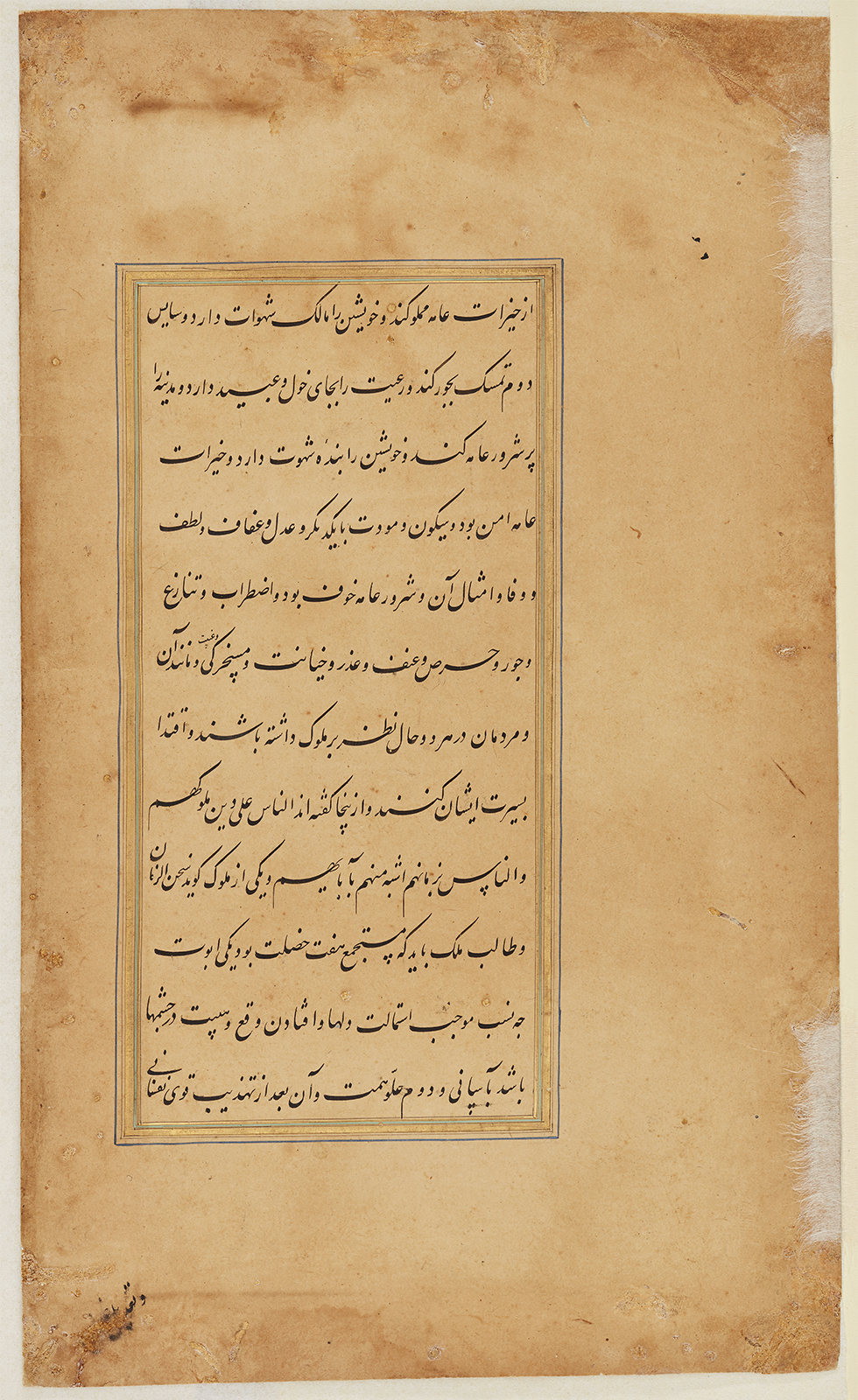Click on the image to zoom
Punishment at Court, Folio from a manuscript of the Ethics of Nasir (Akhlaq-i Nasiri)
- Accession Number:AKM288.13
- Creator:Artist (painter attributed): Kahim Karan
Author: Nasir al-Din Tusi, Persian, 1201 - 1274
Created for: Nasir al-Din `Abd al-Rahim - Place:Pakistan, Lahore
- Dimensions:23.9 cm × 14.2 cm
- Date:ca. 1590-1595
- Materials and Technique:Opaque watercolour, ink and gold on paper
This illustration falls in the Third Discourse, Section 4 on the tenets of good government. In the text, Nasir al-Din Tusi contrasts the example of a ‘Virtuous Government’, which is true to justice and the good treatment of its subjects, with a ‘Deficient Government’, which is tyrannical and treats its subjects as slaves. The painting, in which a man is flogged at the order of the ruler, might plausibly relate to either.
See AKM288 for an introduction to a manuscript of the Ethics of Nasir (Akhlaq-i Nasiri) and links to the other paintings within this manuscript.
— Marika Sardar
Note: This online resource is reviewed and updated on an ongoing basis. We are committed to improving this information and will revise and update knowledge about this object as it becomes available.




